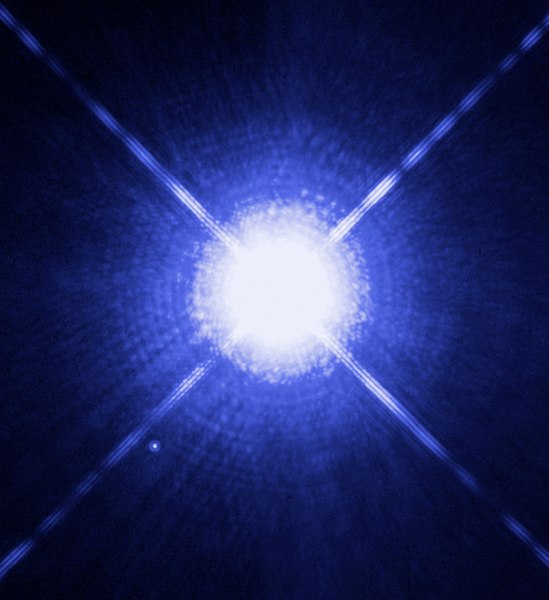In astronomy, the Roche lobe is the region around a star in a binary system within which orbiting material is gravitationally bound to that star. It is an approximately teardrop-shaped region bounded by a critical gravitational equipotential, with the apex of the teardrop pointing towards the other star (the apex is at the L1 Lagrangian point of the system).
A three-dimensional representation of the Roche potential in a binary star with a mass ratio of 2, in the co-rotating frame. The droplet-shaped figures in the equipotential plot at the bottom of the figure define what are considered the Roche lobes of the stars. L1, L2 and L3 are the Lagrangian points where forces (considered in the rotating frame) cancel out. Mass can flow through the saddle point L1 from one star to its companion, if the star fills its Roche lobe.
A binary star or binary star system is a system of two stars that are gravitationally bound to and in orbit around each other. Binary stars in the night sky that are seen as a single object to the naked eye are often resolved using a telescope as separate stars, in which case they are called visual binaries. Many visual binaries have long orbital periods of several centuries or millennia and therefore have orbits which are uncertain or poorly known. They may also be detected by indirect techniques, such as spectroscopy or astrometry. If a binary star happens to orbit in a plane along our line of sight, its components will eclipse and transit each other; these pairs are called eclipsing binaries, or, together with other binaries that change brightness as they orbit, photometric binaries.
The well-known binary star Sirius, seen here in a Hubble photograph from 2005, with Sirius A in the center, and white dwarf, Sirius B, to the left bottom from it
Edge-on disc of gas and dust present around the binary star system HD 106906
Artist's conception of a cataclysmic variable system
Artist's impression of the binary star system AR Scorpii





